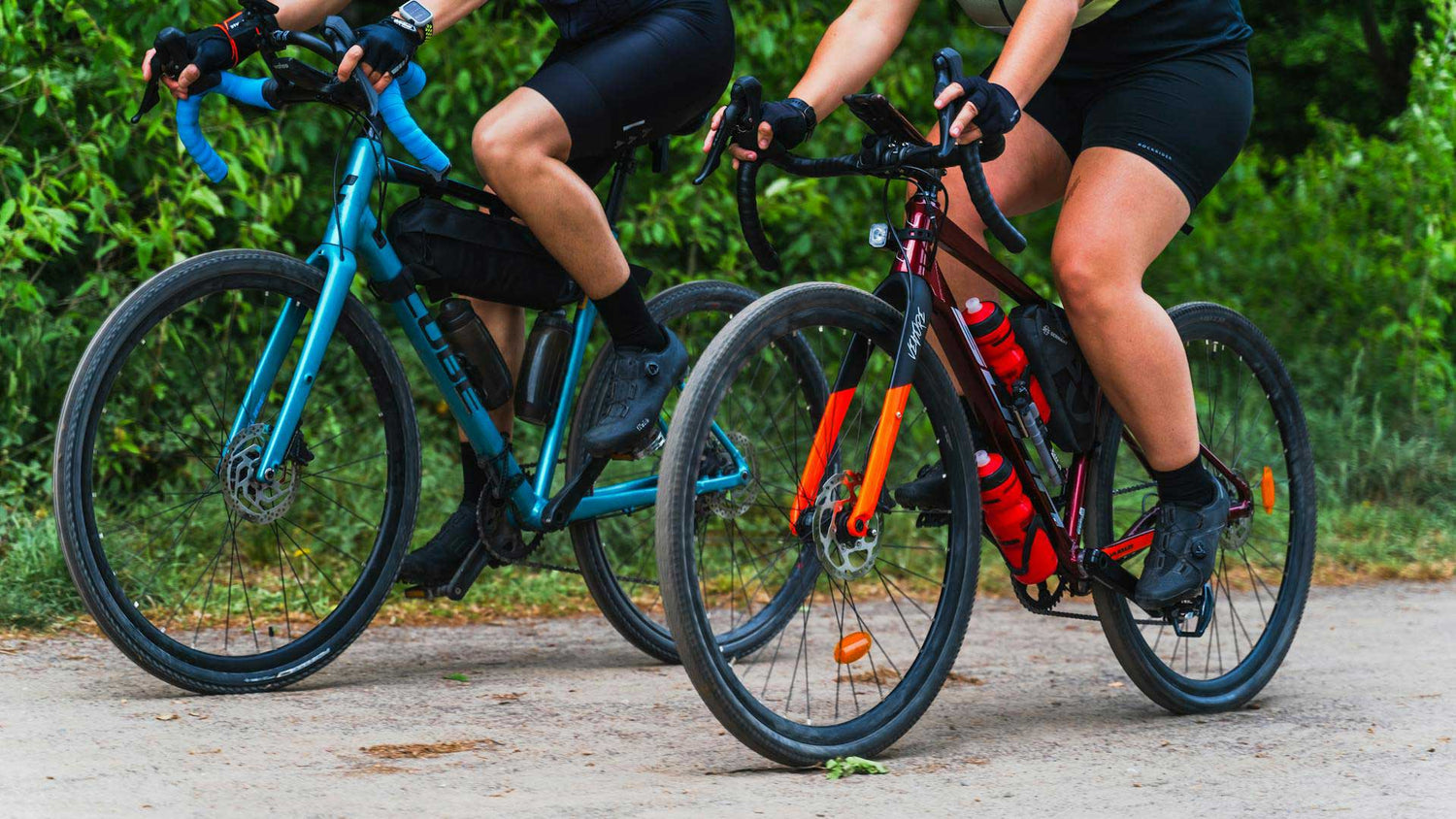"How do they roll?" is probably the most frequently asked question we get about Tannus Airless tyres. It's not an easy question to answer. Yes, you could fit an Airless tyre to a wheel atop a rotating drum and measure how much power it takes to get it up to a certain speed. But we ride our bikes on different road surfaces and, with the exception of Swiss roads, they vary greatly in roughness (rough being the operative part of that word). Let's look at the factors that affect rolling resistance.
Roling resistance 101
A tyre deforms at the point it makes contact with the ground due to the weight of the bike and rider pressing down on it. This flattening isn't a bad thing. The contact patch between tyre and road is where the grip that helps keep you upright when cornering is created due to friction. However, the contact patch also creates rolling resistance. This is in part because your circular tyre/wheel combination is no longer perfectly circular, but also because of something called Hysteresis. The National Academy of Sciences defines Hysteresis as:
“A characteristic of a deformable material such that the energy of deformation is greater than the energy of recovery. The rubber compound in a tire exhibits hysteresis. As the tire rotates under the weight of the [rider+bike], it experiences repeated cycles of deformation and recovery, and it dissipates the hysteresis energy loss as heat. Hysteresis is the main cause of energy loss associated with rolling resistance and is attributed to the viscoelastic characteristics of the rubber.”
In other words, the tyre deforms (flattens) when it is contact with the ground and once it is no longer in contact with the ground returns to its original shape. Energy is lost as heat during this deformation-recovery cycle. This is the greatest source of roling resistance for your bike tyres (we'll save aerodynamics for another day).
Harder isn't always faster
The obvious solution to this deformation would appear to be pump your tyres up harder to reduce the amount of tyre deformation and the size of the contact patch. This works up to a certain pressure. However, there comes a point where the tyre is so hard that vertical movement is introduced, since it no longer deforms as it rolls over variations in the road surface. The point where this occurs on a graph that plots rolling resistance against tyre pressure is called the Impedance Break Point. Once you go past this point adding more pressure is actually increasing your rolling resistance.
The vertical movement that occurs as your tyres get harder is felt as vibration. Curiously, people associate vibration with speed. This is probably why the notion that harder is faster continues to be ingrained in the cycling collective consciousness, even though we have bike computers and power meters to provide real world data that says otherwise. It feels fast, so it must be fast. In pure performance terms also consider this: the vibration from overly hard tyres is also being transfered into your body and contributing to fatigue and discomfort.
So where does this leave us? Too soft a ride means more rolling resistance. Too hard a ride means the same, but with the addition of fatiguing vibration. Plus, unless you are on a velodrome the surface you are riding on can change drastically throughout a ride. The optimal setup for one road surface may be far from optimal for others. In short, everyday riding will always involve some form of compromise in optimal rolling resistance whatever your choice of tyres. I guess the answer to the question "How do Tannus Airless tyres roll?" is "It depends on the surface". But regardless of the surface, you'll never get a puncture. 100% guaranteed.





